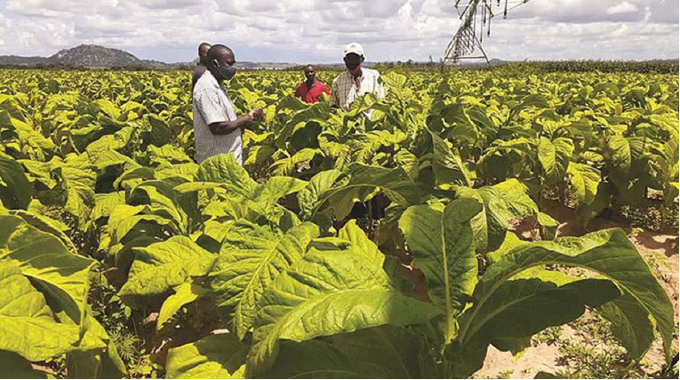Tobacco stakeholders at crossroads over sustainable tobacco curing options

Edgar Vhera
Agriculture Specialist Writer
WITH many farmers currently seized with reaping, curing and grading their tobacco in readiness for the market, debate is raging among stakeholders on which tobacco curing option between wood and coal would be sustainable going into the future.
Tobacco Farmers Union Trust (TFUT) vice president Mr Edward Dune yesterday observed that most contractors were providing farmers with coal instead of wood that is more sustainable than the former.
“Most contractors are giving farmers curing coal but we think wood of an equivalent to the coal component would be better as less charges would be incurred by farmers in United States dollar terms.
“Over the years, farmers have been crying foul over debts that accrue in foreign currency and subsequently eroding all their anticipated earnings,” said Mr Dune.
Zimbabwe Tobacco Association (ZTA) chief executive officer Mr Rodney Ambrose was in agreement saying contractors should give farmers sustainably produced wood, as coal was not sustainable.
“Sustainable wood is the way forward as coal use is unsustainable and will likely to be phased out in the near future if the current lobbying by environmentalists prevails,” said Mr Rodney Ambrose.
Tobacco Farmers Union Trust president Mr Victor Mariranyika concurred that wood was the way to go.

Today’s Agric Tips
“AS harvesting, curing, staking and grading of irrigated tobacco are the dominant activities on the ground, we believe farmers should be given wood instead of coal, as it is less damaging to the environment thereby reducing adverse climatic changes,” said Mr Victor Mariranyika.
Tobacco contractors have signed the compliance enforcement framework (CEF) with Tobacco Industry and Marketing Board (TIMB) that requires them to fund minimum input package.
Under the CEF a one-hectare pack for small-scale production includes 500 kilogrammes of coal or its sustainable wood equivalent as curing fuel.
On the other hand, a one-hectare pack for commercial production require 3 000 kilogrammes of coal or its wood equivalent.
Efforts to get a comment from tobacco contractors were unfruitful as the Tobacco Industry and Marketing Board (TIMB) could not release the names and details of contractors saying there were still issues being finalised.
The Government in 2021 crafted the tobacco value chain transformation plan (TVCTP) that among other objectives sought sustainable intensification of tobacco production to 300 million kilogrammes by 2025.
Under the TVCTP the following strategic initiatives were set: support for sustainable afforestation programmes as a proven solution in major tobacco producing countries, partnerships in research and development and promotion of fuel-efficient curing facilities and use of alternative sources of energies for curing tobacco such as biogas and solar hybrid barns as well as research in suitability of other tree species as sources of fuel especially the giant bamboo.
The production and marketing of tobacco is under threat from the Framework Convention of Tobacco Control (FCTC) that came into effect in 2005. This framework associates tobacco with detrimental effects on the environment and health of farm workers.










Comments